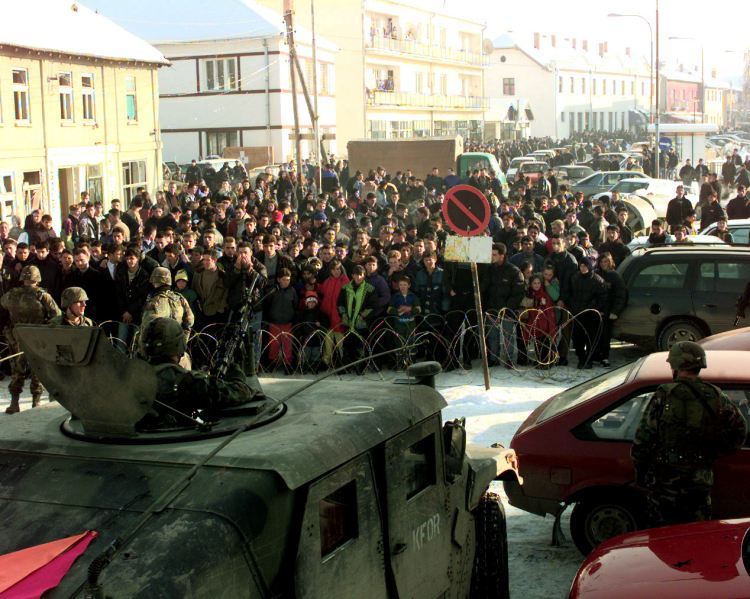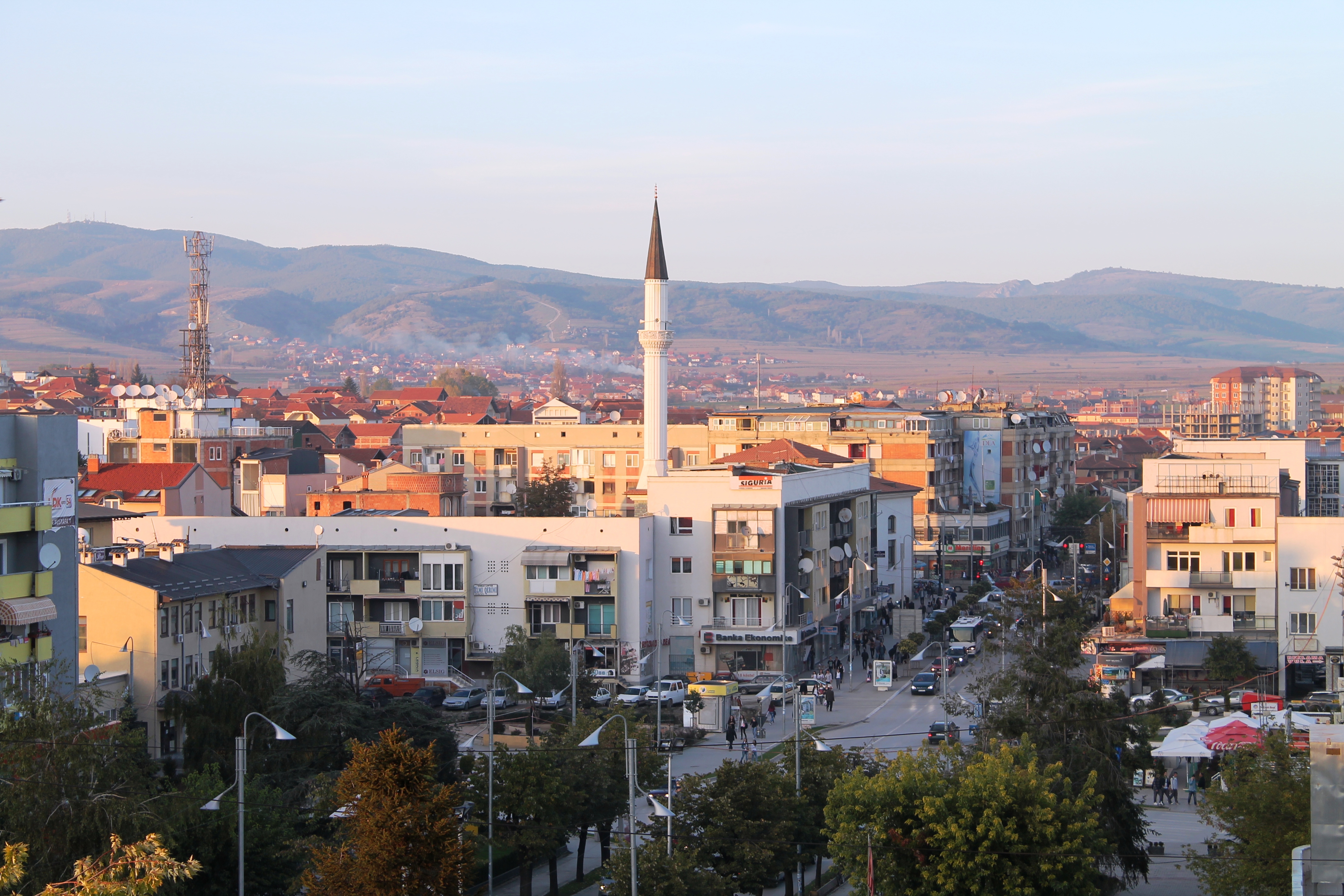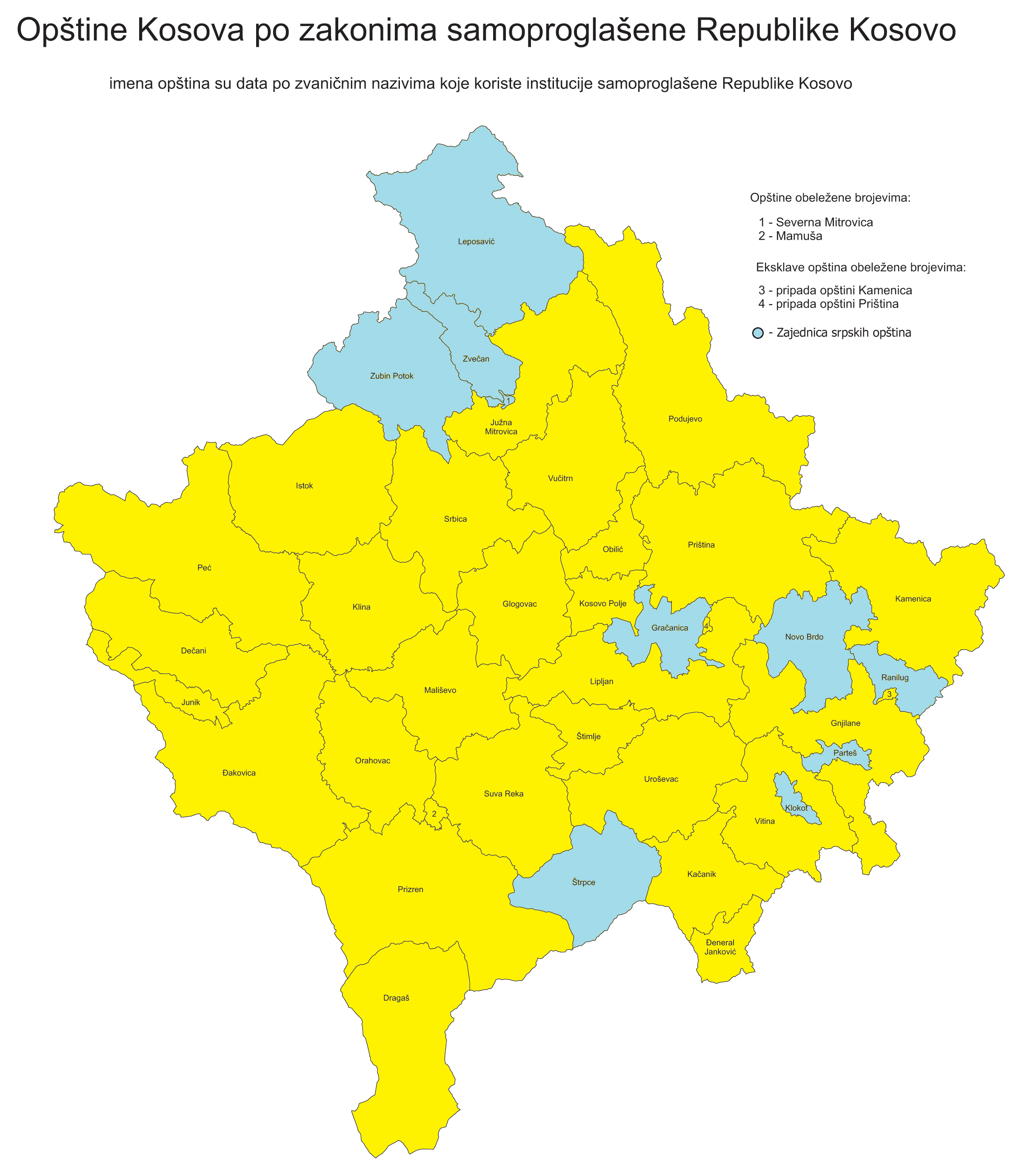|
Kabaš
Kabash is a town in the Viti Municipality of southeast Kosovo.GNS names History The ancestors of the inhabitants of the village belong to the Kabashi tribe. The Austro-Hungarian Austria-Hungary, also referred to as the Austro-Hungarian Empire, the Dual Monarchy or the Habsburg Monarchy, was a multi-national constitutional monarchy in Central Europe between 1867 and 1918. A military and diplomatic alliance, it consist ... consulate in Belgrade reported that during February 1913, Serbian military forces executed all Albanian inhabitants of the villages of Kabash, Tërpezë, Lubisht and Gjylekar. Geography The village is located in the Anamorava valley and is situated on the foot of the Karadak mountains. References Villages in Viti, Kosovo {{Kosovo-geo-stub ... [...More Info...] [...Related Items...] OR: [Wikipedia] [Google] [Baidu] |
Vitina Municipality
Viti ( sq-definite, Vitia) or Vitina ( sr-Cyrl, Витина) is a List of cities in Kosovo, town and Municipalities of Kosovo, municipality located in the District of Gjilan in Kosovo. According to the 2011 census, the town of Viti has 4,924 inhabitants, while the municipality has 46,987 inhabitants. Geography The town of Viti and the southern part of the Municipality lies on the foothills of the Skopska Crna Gora, Skopska Crna Gora Mountains. History Ottoman period The municipality has several settlements historically inhabited by the Laramans, crypto-Catholics. Kosovo War and aftermath During the Kosovo War 16 KLA soldiers, as well as 5 Serb soldiers and policemen were killed in Viti. The entire fighting happened in 1999 and in the southern part of the municipality, near the Skopska Crna Gora, Karadak Mountains, in villages such as Lubishtë, Gjylekar, Gjylekare, Mogillë, Smirë, Kabash and Dëbëlldeh. During and after the Kosovo War 76 civilians were killed, 38 Albani ... [...More Info...] [...Related Items...] OR: [Wikipedia] [Google] [Baidu] |
Viti, Kosovo
Viti ( sq-definite, Vitia) or Vitina ( sr-Cyrl, Витина) is a town and municipality located in the District of Gjilan in Kosovo. According to the 2011 census, the town of Viti has 4,924 inhabitants, while the municipality has 46,987 inhabitants. Geography The town of Viti and the southern part of the Municipality lies on the foothills of the Skopska Crna Gora Mountains. History Ottoman period The municipality has several settlements historically inhabited by the Laramans, crypto-Catholics. Kosovo War and aftermath During the Kosovo War 16 KLA soldiers, as well as 5 Serb soldiers and policemen were killed in Viti. The entire fighting happened in 1999 and in the southern part of the municipality, near the Karadak Mountains, in villages such as Lubishtë, Gjylekare, Mogillë, Smirë, Kabash and Dëbëlldeh. During and after the Kosovo War 76 civilians were killed, 38 Albanians and 38 Serbs. Following the 1999 Kosovo War, it was the home of A Company, 2/505 Parach ... [...More Info...] [...Related Items...] OR: [Wikipedia] [Google] [Baidu] |
District Of Gjilan
The District of Gjilan (; ) is one of the seven Districts of Kosovo, districts (the higher-level administrative divisions) of Kosovo. Its seat is in the city of Gjilan. History Anamorava, literally "side of river of Morava", is the hilly countryside in south eastern Kosovo south of Gjilan and on the Binačka Morava. It stretches eastward to the Preševo (Presheva) valley in southern Serbia. The mountains in this region rise to an altitude of 1,000 to 1,200 meters, and culminate in the Skopska Crna Gora, Skopska Crna Gora region bordering neighboring North Macedonia north of Skopje. Municipalities The district of Gjilan has a total of 6 municipalities and 287 other smaller settlements: Ethnic groups In 1991, all municipalities of the district had an Albanians in Kosovo, Albanian majority: Gjilan (76.54%), Kamenica, Kosovo, Kamenica (73.05%), Viti, Kosovo, Viti (78.68%). In the 2011 census, after the creation of new municipalities with Serb population, Albanians are the ma ... [...More Info...] [...Related Items...] OR: [Wikipedia] [Google] [Baidu] |
Municipalities Of Kosovo
A municipality (; ) is the basic administrative division in Kosovo and constitutes the only level of power in local governance. There are 38 municipalities in Kosovo; 27 of which have an Kosovo Albanians, Albanian ethnic majority, 10 Kosovo Serbs, Serb and Mamusha, 1 Turks in Kosovo, Turkish. After the Brussels Agreement (2013), 2013 Brussels Agreement, signed by the governments of Government of Kosovo, Kosovo and Government of Serbia, Serbia, an agreement was made to create a Community of Serb Municipalities, which would operate within Kosovo's legal framework. Since 2013, the agreement has not been fulfilled by Kosovo's authorities, calling upon its Constitution of Kosovo, constitution and territorial integrity. List of municipalities Powers of municipalities All municipalities have the following competences, as regulated by Law Nr. 03/L-040 of the Constitution of Kosovo: # Local economic development. # Urban and rural planning. # Land use and development. # Implementation ... [...More Info...] [...Related Items...] OR: [Wikipedia] [Google] [Baidu] |
Central European Time
Central European Time (CET) is a standard time of Central, and parts of Western Europe, which is one hour ahead of Coordinated Universal Time (UTC). The UTC offset, time offset from UTC can be written as UTC+01:00. It is used in most parts of Europe and in several African countries. CET is also known as Middle European Time (MET, German: :de:Mitteleuropäische Zeit, MEZ) and by colloquial names such as Amsterdam Time, Berlin Time, Brussels Time, Budapest Time, Madrid Time, Paris Time, Stockholm Time, Rome Time, Prague time, Warsaw Time or Romance Standard Time (RST). The 15th meridian east is the central axis per UTC+01:00 in the world system of time zones. As of 2023, all member state of the European Union, member states of the European Union observe summer time (daylight saving time), from the last Sunday in March to the last Sunday in October. States within the CET area switch to Central European Summer Time (CEST, UTC+02:00) for the summer. The next change to CET is scheduled ... [...More Info...] [...Related Items...] OR: [Wikipedia] [Google] [Baidu] |
Central European Summer Time
Central European Summer Time (CEST, UTC+02:00), sometimes referred to as Central European Daylight Time (CEDT), is the standard clock time observed during the period of summer daylight-saving in those European countries which observe Central European Time (CET; UTC+01:00) during the other part of the year. It corresponds to UTC+02:00, which makes it the same as Eastern European Time, Central Africa Time, South African Standard Time, Egypt Standard Time and Kaliningrad Time in Russia. Names Other names which have been applied to Central European Summer Time are Middle European Summer Time (MEST), Central European Daylight Saving Time (CEDT), and Bravo Time (after the second letter of the NATO phonetic alphabet). Period of observation Since 1996, European Summer Time has been observed between 01:00 UTC (02:00 CET and 03:00 CEST) on the last Sunday of March, and 01:00 UTC on the last Sunday of October; previously the rules were not uniform across the European Union. The ... [...More Info...] [...Related Items...] OR: [Wikipedia] [Google] [Baidu] |
Kosovo
Kosovo, officially the Republic of Kosovo, is a landlocked country in Southeast Europe with International recognition of Kosovo, partial diplomatic recognition. It is bordered by Albania to the southwest, Montenegro to the west, Serbia to the north and east, and North Macedonia to the southeast. It covers an area of and has a population of approximately 1.6 million. Kosovo has a varied terrain, with high plains along with rolling hills and List of mountains in Kosovo, mountains, some of which have an altitude over . Its climate is mainly Continental climate, continental with some Mediterranean climate, Mediterranean and Alpine climate, alpine influences. Kosovo's capital and List of cities and towns in Kosovo#List, most populous city is Pristina; other major cities and urban areas include Prizren, Ferizaj, Gjilan and Peja. Kosovo formed the core territory of the Dardani, an ancient Paleo-Balkanic languages, Paleo-Balkanic people attested in classical sources from the 4th cent ... [...More Info...] [...Related Items...] OR: [Wikipedia] [Google] [Baidu] |
Kabashi
The Kabashi (the definite form of Kabash) are an Albanian tribe, or ''fis'', from the Pukë region. It is considered part of the "seven tribes of Puka" (Albanian: shtatë bajrakët e Pukës) that inhabit the region. Durham said of them: "Puka group ... sometimes reckoned a large tribe of seven bairaks. Sometimes as a group of tribes". Geography Kabashi tribal territory is situated on the left (southern) side of the Drin River. Kabashi territory borders the Qerreti and Puka tribes to the west, the Berisha tribe to the north, the Spaçi tribe of Mirdita to the south, the Thaçi tribe to the east and the Dushmani tribe to the northwest, across the Drin River. Kabashi tribal territory is centred on the Gomina river basin, which flows into the Drin, and the Kabashi settlements consist of Qelëza, Kabash, Bushat, Dedaj, Micoj, Ukth, Kryezi and Meçja. Origins and history The traces of the term 'Kabashi' can be found in Stratioti documents as ''Cabassi'' or ''Cambassi'' in 1530 ... [...More Info...] [...Related Items...] OR: [Wikipedia] [Google] [Baidu] |
Austria-Hungary
Austria-Hungary, also referred to as the Austro-Hungarian Empire, the Dual Monarchy or the Habsburg Monarchy, was a multi-national constitutional monarchy in Central Europe#Before World War I, Central Europe between 1867 and 1918. A military and diplomatic alliance, it consisted of two sovereign states with a single monarch who was titled both the Emperor of Austria and the King of Hungary. Austria-Hungary constituted the last phase in the constitutional evolution of the Habsburg monarchy: it was formed with the Austro-Hungarian Compromise of 1867 in the aftermath of the Austro-Prussian War, following wars of independence by Hungary in opposition to Habsburg rule. It was dissolved shortly after Dissolution of Austria-Hungary#Dissolution, Hungary terminated the union with Austria in 1918 at the end of World War 1. One of Europe's major powers, Austria-Hungary was geographically the second-largest country in Europe (after Russian Empire, Russia) and the third-most populous (afte ... [...More Info...] [...Related Items...] OR: [Wikipedia] [Google] [Baidu] |
Kosovo Pomoravlje
Anamorava (), or Kosovo Pomoravlje ( / ''Kosovsko Pomoravlje'', "Morava Valley of Kosovo"), is a valley in Kosovo, in the southern part of the District of Gjilan surrounding the Morava e Binçës River. It stretches eastward to the Preševo Valley in southern Serbia. The mountains in this region, rising to an altitude of , border the Skopska Crna Gora region in north of Skopje. Gjilan, Kamenica, Novo Brdo and Viti are municipalities located in the region. Name The region is known as ' ("Valley of the side of Morava e Binçës") in Albanian and as ''Kosovsko Pomoravlje'' (, "Morava Valley of Kosovo") in Serbian. Its name is derived from the Morava e Binçës river, which flows through northern North Macedonia, eastern Kosovo and southern Serbia as part of the Great Morava river system. Geography Anamorava is about long and wide. It is bordered by the Skopska Crna Gora mountains in the south, Gollak in the north, and Kosovo field in the west. On the east, it borders the Mor ... [...More Info...] [...Related Items...] OR: [Wikipedia] [Google] [Baidu] |
Skopska Crna Gora
Skopska Crna Gora or Karadak Mountains ( Macedonian and , ; ), often called simply Crna Gora (Macedonian and ; ), is a mountain range and ethnographic region in North Macedonia, Kosovo and Serbia. The highest peak is Ramno in Macedonia. The largest town on the mountain is Kučevište in North Macedonia. Name Skopska Crna Gora is also known as Karadak (from earlier – "Black Mountain"; Macedonian and ; ), which appeared after the Ottoman conquest of the region.С. Томић, Скопска Црна Гора, Српски етнолошки зборник 3, Београд 1905, 409—417. Geography Skopska Crna Gora extends from the Kaçanik Gorge to the west - to and the Gorge of Končulj in the east. In the north, it stretches from Binačka Morava to Aračinovo in the south. The relief structure is fragmented due to the rivers of the region which descend from high points and carry eroded material. Additionally, the geological composition of the region is complicat ... [...More Info...] [...Related Items...] OR: [Wikipedia] [Google] [Baidu] |





